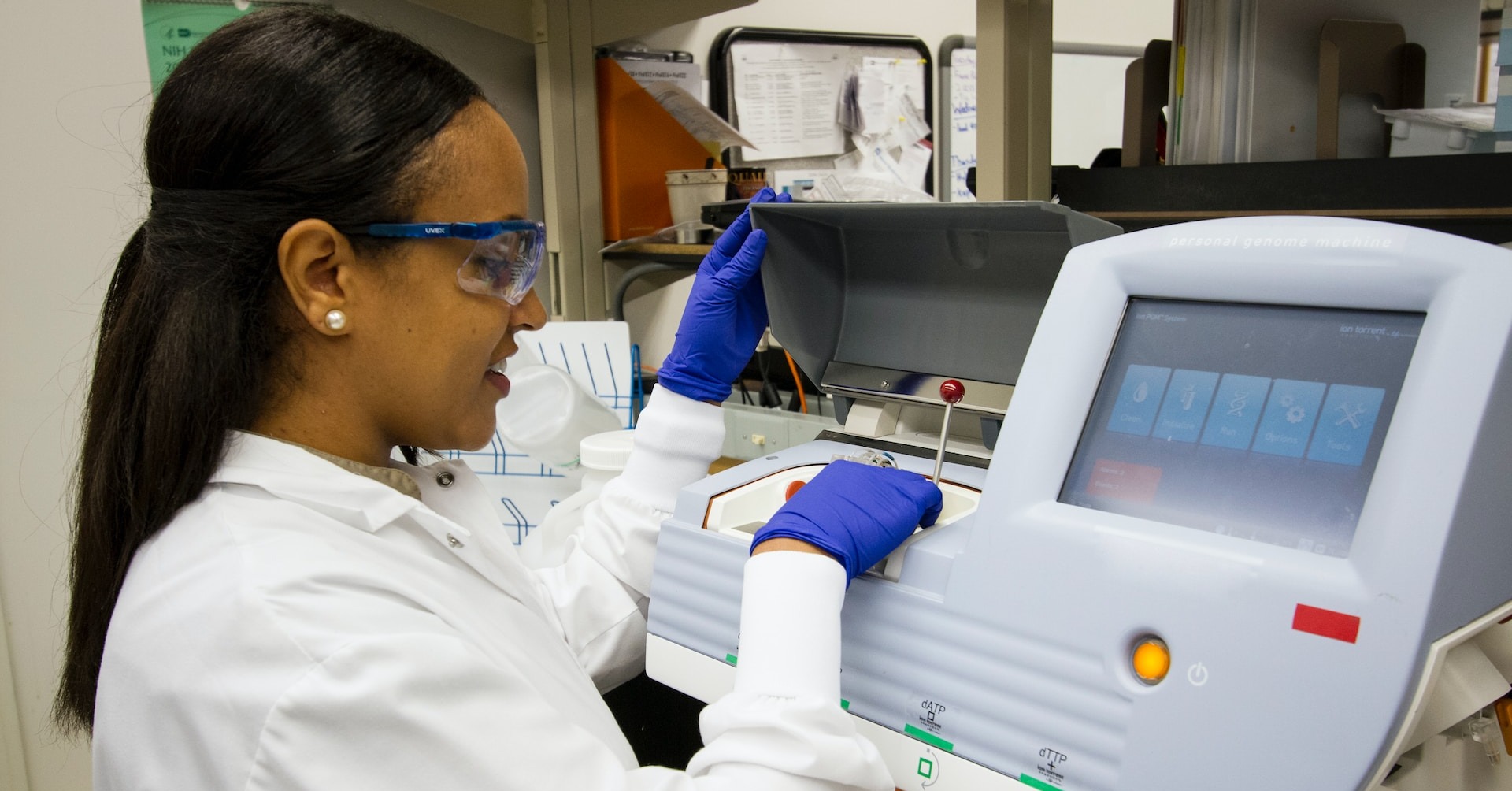
What Does a Family Nurse Practitioner Do?
Family nurse practitioners perform most of the same tasks as [...]

Do numbers, math, and data analysis inspire you? Do you dream of digging into figures to unearth novel and valuable insights? If so, a career in statistics may be right for you.
Statisticians work in public service, healthcare and wellness, cybersecurity, environmental science, technology, and many other enterprises that rely heavily on informatics, data science, and analytics.
Statistics degrees apply to many fields and can bolster any resume because statisticians collect and analyze numerical data and interpret it to drive corporate and organizational forecasts and decision-making. While a bachelor’s degree can open the door to entry-level roles, a master’s degree can help you earn higher wages in more-responsible positions.
The U.S. Bureau of Labor Statistics (BLS) projects employment for statisticians and mathematicians is to grow by 31 percent from 2021 to 2031, creating roughly 4,100 new jobs per year. The median annual salary for statisticians is $95,570, with the potential to reach six-figures in research and development and federal government roles.
Job titles vary within this profession. Opportunities abound in this field, which is projected to grow six times faster than the overall employment market. What job can you get with a statistics degree? This article explores that question by delving into the following topics:
A master’s in statistics degree can prepare you for many fulfilling careers. An advanced curriculum covering predictive modeling, hypothesis testing, computational statistics, and additional courses trains students to analyze and interpret data sets across organizations and industries. The Master of Science in Statistics from Stanford University, for example, covers four focus areas:
A master’s degree builds upon undergraduate coursework to prepare future statisticians and mathematicians for high-paying, high-demand jobs.
| University and Program Name | Learn More |
|
Boston College:
Master of Science in Applied Economics
|
|
|
Boston College:
Master of Science in Applied Analytics
|
|
|
Merrimack College:
Master of Science in Data Science
|
A degree in statistics can open the door to various opportunities, whether forecasting market trends as a market research analyst or using statistics to optimize searches and advertisements as a staff engineer. Some entry-level roles may accept candidates with a bachelor’s degree; however, a master’s degree (and sometimes a PhD) is often required of those pursuing senior-level or managerial roles.
Advanced roles for biostatisticians, data scientists, and public health statisticians typically require comprehensive preparation through a master’s degree program. Read on to learn about the careers you can pursue with a master’s in statistics degree and the salaries you can expect.
For entry-level roles, data scientists may get by with an associate’s or bachelor’s degree in mathematics, statistics, or a related field. However, if you seek increased responsibilities to propose business solutions and make data-driven recommendations to key stakeholders, a graduate-level degree may be necessary.
Data scientists earn an average annual income of $100,910. The job outlook for data scientists looks promising, with an estimated 36 percent growth rate over the decade.
Statisticians undertake comprehensive duties for which a master’s degree and perhaps a doctoral degree is often a prerequisite. Statisticians’ duties include:
The average annual income for statisticians is $99,450, with higher earning potential based on the industry. The top-paying industries for statisticians include:
While those industries make up only a small percentage of employed statisticians, industries with higher employment opportunities, such as scientific research and development services, the federal government, and computer systems design, still average six-figure salaries.
Data analysts utilize a triple combo of statistics, business intelligence, and information science techniques to collect, sort, and analyze data. Data analysts typically remain in the background, reporting their findings to data scientists who then report them to other stakeholders.
According to Payscale, data analysts can earn an average base annual income of $63,577. Individuals with skills in data analysis, SQL, and statistical analysis earn above-average wages. Data analysts’ salaries also vary by location; data analysts can earn an average of 33 percent more than the national average in San Francisco and 11 percent more than the national average in New York City.
While most data analysts hold a bachelor’s degree, career trajectory and advanced education can lead to roles with more responsibilities and higher salaries, including senior analysts, data scientists, and analytics managers.
Biostatisticians typically work in healthcare settings or within labs or pharmaceutical companies. They interpret and analyze medical data and statistics from research studies or clinical trials, then make predictions and draw conclusions from the data collected. Most biostatistician careers require a master’s or doctorate, especially for managerial positions.
In addition to mathematics and computers, biostatisticians must also have advanced knowledge of biostatistics, pharmacology, life sciences, and social sciences, as they often collaborate with medical doctors and life scientists. For instance, biostatistical analysis played an essential role in COVID-19 vaccination clinical trials.
Biostatisticians average an annual salary of $95,570 in a discipline growing much faster than average.
Statisticians who program fall into two basic categories: statistical programmers and SAS programmers. These programmers perform many of the same functions;, the primary difference is that SAS programmers use analytic software produced by the Statistical Analysis System (SAS) Institute, which requires a SAS certification.
According to Payscale, SAS programmers average an annual base salary of $81,512. Programmers with SAS and statistical analysis skills can earn higher wages than the national average. SAS programmers commonly hold a bachelor’s or master’s degree in statistics, mathematics, computer science, or a related field, with at least three years of professional work experience.
Research associate is an entry-level role with an average annual salary of $54,757. Location and years of experience play a role in higher earning potential.According to Indeed, high-paying cities for research associates include:
Individuals in this role typically have a bachelor’s degree in an industry-related field with coursework in statistics, research, economics, and marketing. In addition, some job descriptions may require data analysis and collection, computer skills, and experience conducting clinical trials.
According to Glassdoor, public health statisticians earn an average base salary of $109,451 annually. Most jobs require incoming candidates to have an undergraduate or graduate-level degree in biostatistics or public health. This discipline collaborates with public health officials, statisticians, and epidemiologists to promote health policies and programs backed by statistical methods.
Many entry-level careers require at least a bachelor’s degree in statistics. Electives in biology, chemistry, computer science, life sciences, or physical sciences can prepare you for specific industries. If you’re looking for more responsibilities and decision-making duties within leadership or management, know that a master’s or doctoral degree is often a prerequisite to fulfill those complex, senior-level roles.
On average, it takes about two years to complete a master’s degree program in statistics. Conveniently, many schools offer this degree online, providing flexibility for working professionals. Accelerated programs can take less than a year to complete for professionals on the fast track to more advanced, higher-paying roles.
Admission into a master’s degree program in statistics follows pretty standard requirements. You’ll likely need the following:
If spending additional years in school is not your forte, consider certificates, fellowships, or boot camps. These options take less time and cost less money. However, there are drawbacks. They typically require greater self-discipline, you may not enjoy as many networking opportunities, and some employers do not value certificates as highly as graduate degrees.
Whether you pursue an advanced role in statistics, entering the professional workforce following your undergraduate studies is a great pathway to get your foot in the door and figure out your niche. From there, you can decide whether a master’s degree or alternative continuing education option is the right move for your career objectives.
Questions or feedback? Email editor@noodle.com

Family nurse practitioners perform most of the same tasks as [...]

Epidemiologists work in many settings, including hospitals, universities, and federal, [...]

Choosing a high-quality online MBA program that complements your long-term [...]

An MBA delivers a significant return on investment, not just [...]

According to the Bureau of Labor Statistics, artificial intelligence and [...]
Categorized as: Data Science, Information Technology & Engineering